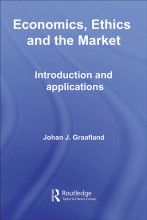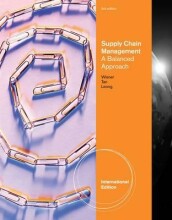Summary: Simulation Modeling And Analysis | 9781259254383 | Averill M Law
- This + 400k other summaries
- A unique study and practice tool
- Never study anything twice again
- Get the grades you hope for
- 100% sure, 100% understanding
Read the summary and the most important questions on Simulation Modeling and Analysis | 9781259254383 | Averill M. Law
-
1 Basic Simulation Modeling
-
1.1 The Nature of Simulation
This is a preview. There are 3 more flashcards available for chapter 1.1
Show more cards here -
For what kinds of problems has simulation been found a useful and powerful tool?
1. Designing and analyzing manufacturing systems.
2. Analyzing supply chains.
3. DeDesigning and operating transportation systems such as airports, freeways, ports and subways. -
Objections against simulation:
1. Models used to study large-scale systems tend to be very complex, and writing computer programs to execute them can be an arduous task indeed.
2. A large amount of computer time is sometimes required.
3. There appears to be an unfortunate impressions that simulation is just an exercise in computer programming, albeit a complicated one. -
What's a system in the simulation
the facility process of interest -
1.2 Systems, Models and Simulations
This is a preview. There are 10 more flashcards available for chapter 1.2
Show more cards here -
State of a system:
collection of variables necessary to describe a system at a particular time, relative to the objectives of a study. -
Ways to study a system:
Look at figure. -
1.3 Discrete-Event Simulation
This is a preview. There are 11 more flashcards available for chapter 1.3
Show more cards here -
What are two principal approaches for advancing the simulation clock?
1. Next-event time advance
2. Fixed-increment time advance -
If the main program invokes event routine i, what are the activities that occur?
1. The system state is updated to account for the fact that an event of type i has occurred.
2. Information about system performance is gathered by updating the statistical counters.
3. The times of occurrence of future events are generated, and this information is added to the event list. -
1.3.1 Time-Advance Mevhanism
This is a preview. There are 4 more flashcards available for chapter 1.3.1
Show more cards here -
Why is it useful to write performance measures in integrals?
Computationally, as the simulation progresses, the integrals can easily be accumulated by adding up areas of rectangles. -
1.4.1 Problem Statement
This is a preview. There are 1 more flashcards available for chapter 1.4.1
Show more cards here -
d(n): Expected Average delay in queue
An average over a discrete number of observations --> discrete time statistic -
Expected utilization proportion of the server
server-busy function divided by T(n)
= the expeteced proprotion of time during the simulation that the server is busy
- Higher grades + faster learning
- Never study anything twice
- 100% sure, 100% understanding
Topics related to Summary: Simulation Modeling And Analysis
-
Basic Simulation Modeling
-
Modeling Complex Systems - List Processing in Simulation
-
Modeling Complex Systems - A simple simulation language: simlib
-
Modeling Complex Systems - Single-Server queueing simulation with simlib
-
Simulation Software - Classification of Simulation Software
-
Simulation Software - Desirable software features
-
Simulation Software - Object-Oriented Simulation
-
Building valid, credible, and appropriately detailed simulation models - Verification of simulation computer programs
-
Building valid, credible, and appropriately detailed simulation models - Techniques for increasing model validity and credibility
-
Building valid, credible, and appropriately detailed simulation models - Statistical procedures for comparing real-world observations and simulation output data
-
Selecting input probability distributions
-
Random-Number Generators - Linear Congruential Generators
-
Random-Number Generators - Other kinds of Generators
-
Generating random variate - Introduction
-
Generating random variate - General approaches to generating random variate
-
Output Data Analysis for a Single System - Introduction
-
Output Data Analysis for a Single System - Transient and steady-state behaviour of a stochastic process
-
Output Data Analysis for a Single System - Types of simulations with regard to output analysis
-
Output Data Analysis for a Single System - Statistical Analysis for terminating simulations
-
Output Data Analysis for a Single System - Statistical Analysis for steady-state parameters
-
Comparing Alternative system Configurations - CI's for the difference between the expected responses of two systems
-
Comparing Alternative system Configurations - CI's for comparing more than two systems
-
Comparing Alternative system Configurations - Ranking and Selection
-
Variance-reduction techniques - Control Variates
-
Variance-reduction techniques - Conditioning
-
Experimental design and optimization - Introduction
-
Experimental design and optimization - 2^k factorial designs
-
Experimental design and optimization - 2^k-p fractional factorial designs
-
Experimental design and optimization - Response surfaces and metamodels
































